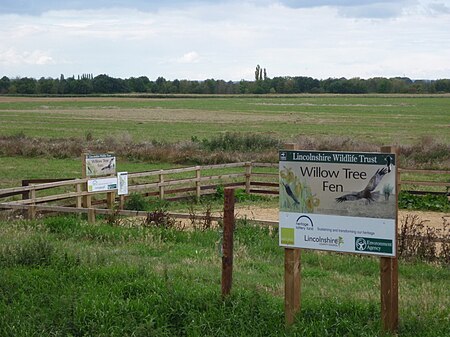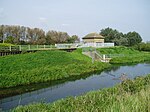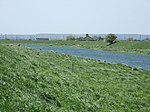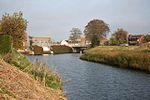Deeping Fen is a low-lying area in the South Holland district of Lincolnshire, England, which covers approximately 47 square miles (120 km2). It is bounded by the River Welland and the River Glen, and is extensively drained, but the efficient drainage of the land exercised the minds of several of the great civil engineers of the 17th and 18th centuries.
Drainage schemes were first authorised during the reign of Queen Elizabeth I, but from 1632, a group of adventurers took control of the drainage, in return for which they were granted land. They faced the problem that the outfalls of the River Welland and the River Glen were not sufficiently low to enable proper drainage by gravity, and most schemes included improvement to the rivers. John Perry, an engineer of some repute, who had set the standard for engineering reports in 1727, began work in 1730, and was followed by John Grundy, Sr., a pioneer in applying scientific principles to civil engineering problems. His son, John Grundy, Jr., was another capable engineer, who was retained as a consultant after he resigned as full-time Surveyor of Works.
In 1800 the civil engineers William Jessop and John Rennie assisted local engineers with plans for improvements, the chief of which was for a steam pumping station. This plan was not implemented immediately, but two steam engines fitted with scoop wheels were installed at Pode Hole in 1823. The pumping station was the largest in the Fens at the time, and remained so for many years. Steam gradually gave way to diesel engines and scoop wheels were replaced by centrifugal pumps, and the diesel engines were then replaced by electric motors. However, the beam engine and scoop wheel at Pinchbeck Marsh, which ran from 1833 to 1952, was not scrapped, and can be visited by the public.
From 1801 the fen was managed by trustees, appointed under the terms of an act of Parliament obtained in that year, and this remained the case until 1939 when the administrative structure was replaced by the Welland & Deepings Internal Drainage Board.










